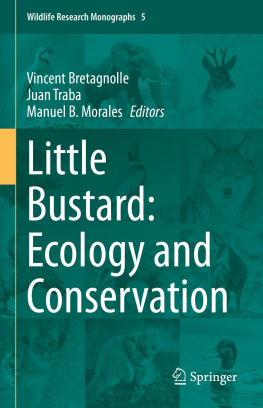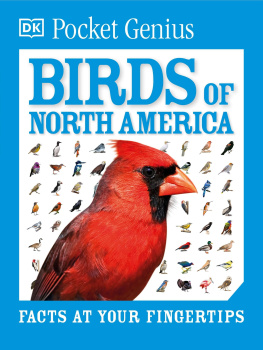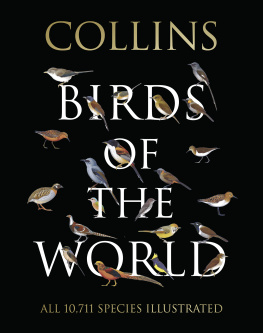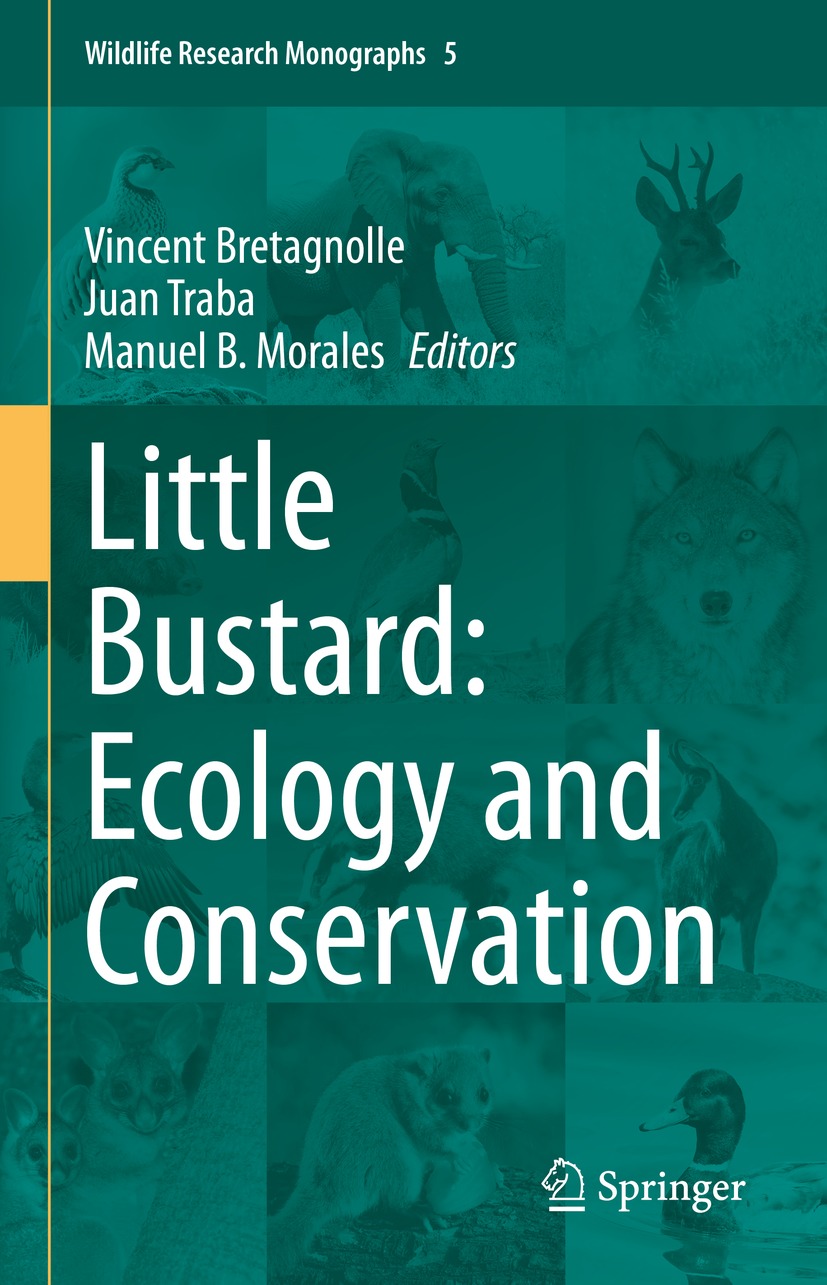Volume 5
Wildlife Research Monographs
Series Editors
Beatriz Arroyo Lopez
Instituto de Investigacin en Recursos Cinegticos, (IREC, CSIC-UCLM-JCCM), Ciudad Real, Spain
Jesus Garcia Gonzalez
Instituto de Investigacin en Recursos Cinegticos, (IREC, CSIC-UCLM-JCCM), Ciudad Real, Spain
Rafael Mateo Soria
Instituto de Investigacin en Recursos Cinegticos, (IREC, CSIC-UCLM-JCCM), Ciudad Real, Spain
The book series on Wildlife Research Monographs focuses on all aspects of wildlife biology to fill a vital niche at the intersection of several disciplines. The aim of the series is to summarize knowledge about interaction between wildlife species, their habitats, as well as human activities. Main areas are: wildlife ecology, diseases, toxicology, conservation, management, and the sustainable use of natural resources. The series addresses graduate students, university teachers, scientists and professionals.
More information about this series at http://www.springer.com/series/8826
Editors
Vincent Bretagnolle , Juan Traba and Manuel B. Morales
Little Bustard: Ecology and Conservation

Logo of the publisher
Editors
Vincent Bretagnolle
Centre dEtudes Biologiques de Chiz, CNRS & La Rochelle Universit, Beauvoir sur Niort, France
Juan Traba
Department of Ecology, Universidad Autnoma de Madrid, Madrid, Spain
Manuel B. Morales
Department of Ecology and Research Centre for Biodiversity and Global Change, Universidad Autnoma de Madrid, Madrid, Spain
ISSN 2366-8733 e-ISSN 2366-8741
Wildlife Research Monographs
ISBN 978-3-030-84901-6 e-ISBN 978-3-030-84902-3
https://doi.org/10.1007/978-3-030-84902-3
Springer Nature Switzerland AG 2022
This work is subject to copyright. All rights are reserved by the Publisher, whether the whole or part of the material is concerned, specifically the rights of translation, reprinting, reuse of illustrations, recitation, broadcasting, reproduction on microfilms or in any other physical way, and transmission or information storage and retrieval, electronic adaptation, computer software, or by similar or dissimilar methodology now known or hereafter developed.
The use of general descriptive names, registered names, trademarks, service marks, etc. in this publication does not imply, even in the absence of a specific statement, that such names are exempt from the relevant protective laws and regulations and therefore free for general use.
The publisher, the authors and the editors are safe to assume that the advice and information in this book are believed to be true and accurate at the date of publication. Neither the publisher nor the authors or the editors give a warranty, expressed or implied, with respect to the material contained herein or for any errors or omissions that may have been made. The publisher remains neutral with regard to jurisdictional claims in published maps and institutional affiliations.
This Springer imprint is published by the registered company Springer Nature Switzerland AG
The registered company address is: Gewerbestrasse 11, 6330 Cham, Switzerland
Author of the picture: Dr. Vincent Bretagnolle
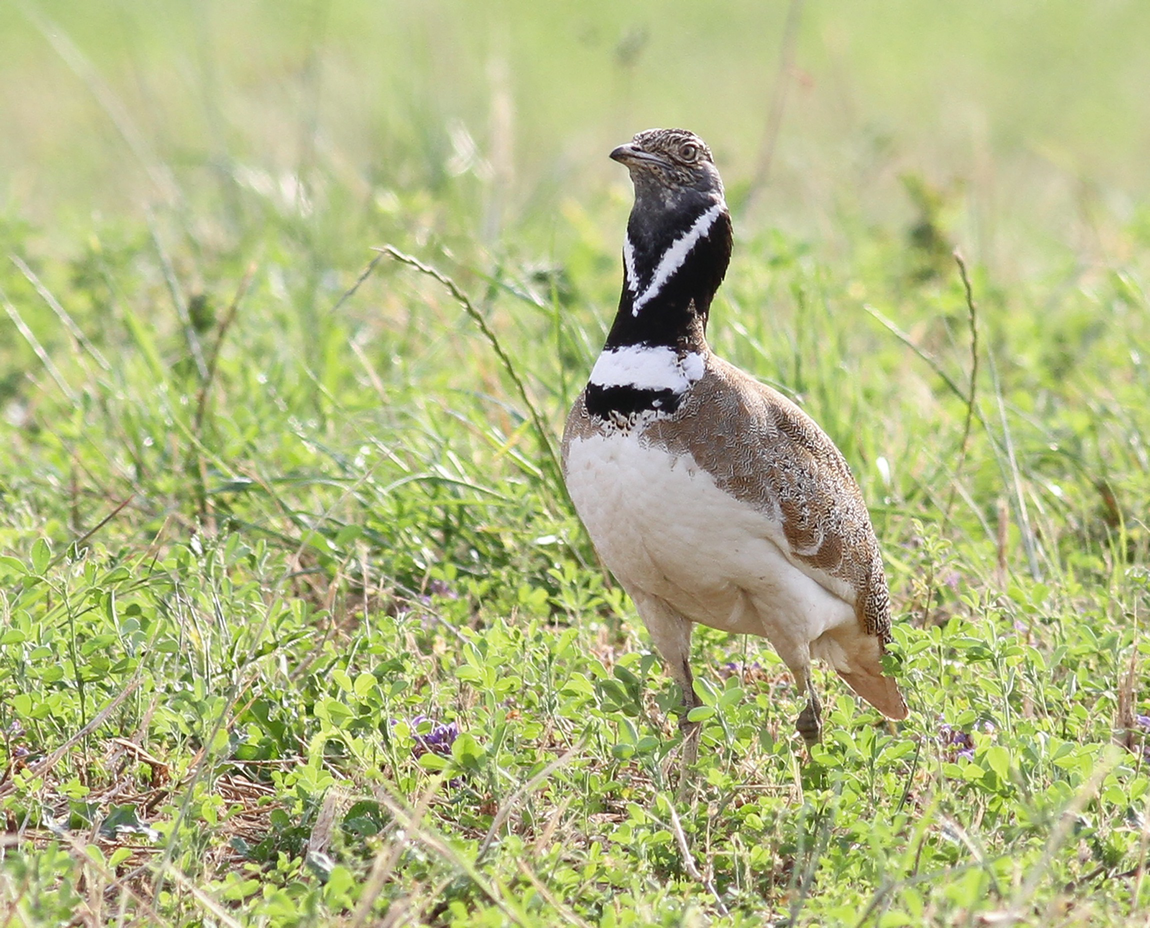
Foreword
Few bird families illustrate the worlds conservation problems better than the bustards. Of the 26 species recognized by BirdLife International, more than half are globally threatened or near threatened with extinction. They owe this parlous conservation status to the full panoply of threats facing wildlife today: habitat loss, degradation and fragmentation, hunting, infrastructure (particularly power lines), disturbance, agricultural intensification, road traffic, predation and climate change have all played a part in driving many species to the edge of extinction. Bustards have few natural defences against predators and therefore rely on flat, open undisturbed expanses of grassland or other low habitats that allow them to see, and keep, danger at a distance. Unfortunately, these are exactly the sorts of habitats that are most easily converted to other purposes, and many of the natural grasslands of Europe and Asia have been ploughed up for arable cultivation. Some African species remain relatively common and thrive in large national parks and undisturbed desert and semi-desert areas, but all the European and Asian species are now listed as globally threatened or near threatened.
Despite their often large size (the family contains the worlds heaviest flying birds), an evolutionary trajectory that has placed a great deal of emphasis on crypsis means that bustards are often hard to observe and to study, and our state of knowledge for many species is poor. It has only been in the last few years, for example, that satellite tracking has revealed that, outside the breeding season, Bengal floricans leave the few protected areas they still nest in and move considerable distances into quite different habitats. The little bustard, being as its name suggests one of the smaller members of the family, is particularly hard to study, but this has not prevented a great deal of research effort being invested in the species, particularly in the European parts of its range. Here, its population has collapsed due to changes in agriculture, and little bustard has become a model species in research assessing the environmental impacts of farming, as the skylark has become elsewhere in Europe. It is therefore both a species of high conservation concern in its own right and an important indicator of the health of the wider landscape. The last two decades have seen a surge in research work on this species, particularly in Spain, Portugal, France and Italy, where it is now restricted to an isolated and threatened population on Sardinia. The recent loss of the species from mainland Italy marks the most recent extinction in a long-term decline that has seen the little bustard being lost as a breeding bird from Germany, Greece, Poland, Slovakia and a number of other European countries. It is no wonder that the little bustard has attracted so much attention from the continents ornithologists. The results of all their work have thus far been published largely in scientific articles, spread across many national and international journals. What has been lacking, until now, is a comprehensive synthesis of this great body of research.
The western European population is extremely important, but the bulk of the little bustards global population lies far to the east, especially in the vastness of the Pontic-Caspian steppes. These cover an area of nearly a million square kilometres between eastern Europe and western China. Here, the species is even more difficult to study; not only are these areas remote and often inaccessible but many populations are migratory, adding a further complication to assessing their conservation status and exposing them to many more threats. Massive changes in steppe management since the collapse of the Soviet Union have led to both gains and losses for little bustards in this region, but much of this information has until now been buried in scientific papers (including in the Russian journal

